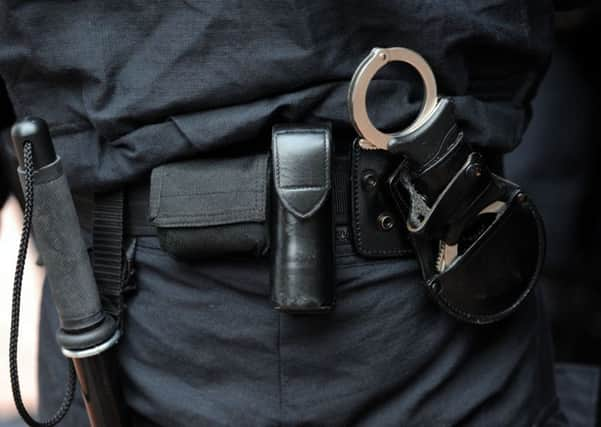Yorkshire police reveal how often officers use force


‘Use of force’ figures, released by West Yorkshire Police, show in 75 per cent of the instances where force was required between April 1 and June 30, ‘tactical communication’ or handcuffs were deployed.
Other tactics such as police dogs, CS spray, batons or Tasers were used in only a quarter of the 7,680 instances, spread over 4,173 incidents, recorded by Yorkshire’s biggest force.
Advertisement
Hide AdAdvertisement
Hide AdNeighbouring North Yorkshire Police revealed last week that it recorded 1,923 instances of ‘use of force’ during the same period, over the course of 901 incidents.
Police forces around the country have been asked to regularly publish data on their officers’ use of force, in a move it is hoped will “strengthen the vital relationship between the police and the public that is at the heart of our model of policing by consent”.
In a recent blog post, Matt Twist, lead for restraint and self-defence for the National Police Chiefs’ Council, said the public had a right to know about the figures. He said: “While most people understand why police have to use force sometimes to keep people safe, I think they also expect that we collect and analyse that informatio about how it is used – and that we make that available to them.”
Assistant Chief Constable Angela Williams of West Yorkshire Police said: “All police forces police by consent – we can only serve the communities of West Yorkshire if we have their support. In the course of those duties, however, police officers must sometimes use force to protect the public and to protect themselves from harm.”
Advertisement
Hide AdAdvertisement
Hide AdOf the 7,680 instances of force used by West Yorkshire Police, 2,554 were tactical communication, 2,147 ‘compliant handcuffing’ and 1,092 ‘non-compliant handcuffing’.
Unarmed skills, meaning physical control of a person without using handcuffs or a baton, was used 1,240 times. Batons were drawn 35 times but only used on 10 occasions, while dogs were deployed on 12 occasions and bit a suspect four times.
Angela Williams said: “Of those injured when police force has been used, over 98 per cent only suffered minor injuries. Police officers put themselves in harm’s way 24 hours a day, 365 days of the year.”
In North Yorkshire, 427 of the 901 use of force incidents were in York and Selby, a ratio which police say is comparable with the number of officers in the area.
Advertisement
Hide AdAdvertisement
Hide AdMost incidents, 478, were on a street or highway, while 188 took place in a custody block and 181 in someone’s home. Force was used on under-18s 148 times.
In contrast to West Yorkshire Police, unarmed skills, such as pressure points, strikes and restraints, was the second most common category.